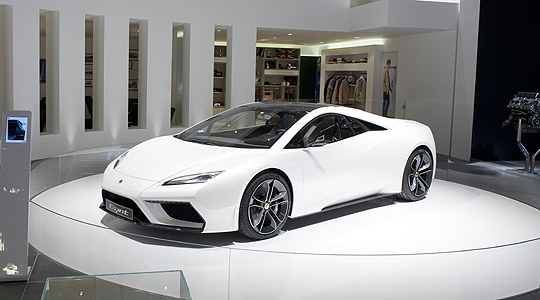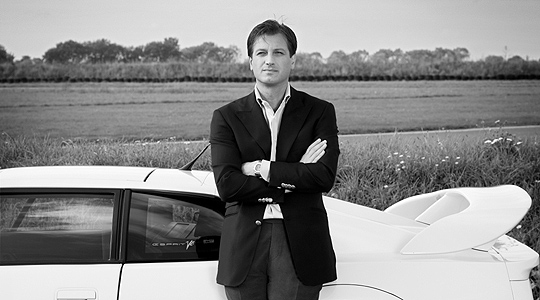
At the Paris motor show in October, Lotus revealed its plans for one of the most ambitious rebirths the motor industry has ever seen: five all-new cars (not to mention a potential sixth, a city car), starting with an Esprit supercar in 2012 and finishing with the Eterne saloon.
In between, there will be the Elise, Elan and Elite. For these five cars, new design chief Donato Coco had to invent an entirely new Lotus look: light, airy but aggressive. Big names from high-end car companies came on board. It all seemed too good to be true.
Critics were quick to highlight snags, such as the fact that Toyota-based engines don't suit a £100,000 supercar: buyers expect something bespoke. Lotus was defensive, but in a set-the-record-straight session on 15 December at London's RAC in Pall Mall, more of the car-maker's plans were revealed.
CEO Dany Bahar agrees about the engine-pedigree snag. The engine, he says, is the heart of the car and if Lotus is to be a credible supercar manufacturer, it must have its own engines. “We have the knowledge to make our own,” he says, “because we already design engines for clients.”

Of course, the business case has to stack up. “We're doing the sums now, and we'll know by the end of January. If we go ahead, the new Esprit [due in 2012] will have our own V8, and a V6 engine will be derived from it. There will be an element of hybrid drive, because a Lotus has to be efficient. In fact all the new Lotuses will have a degree of hybrid technology, from simple stop-start and energy recovery in the Elise to electric motors for the front wheels in the high-end cars, giving virtual four-wheel drive.”
That will still leave the four-cylinder engine for the 2015 Elise, and Lotus has hinted that it might not be Toyota-powered. News of Lotus's tie-up with Renault for Formula One suggests possible Renault power, and Bahar doesn't deny this.
Which leads to what will happen in next year's F1 season. The problem is that the Renault deal was sealed well after Group Lotus licensed the use of the Lotus name to Tony Fernandes' Team Lotus operation, which took to the tracks in 2010 and, like Group Lotus itself, is Malaysian-backed. It's a tricky situation, but Bahar felt the opportunity to run with a 'top five' F1 team was too good to miss and ultimately Lotus owns its own name.

Next year we'll most likely see four Lotus-badged F1 cars on the grid because contracts will make any other outcome unlikely, but thereafter the current Team Lotus will probably gain a new name. “It's nobody's mistake,” Bahar insists, “and it's not really a fight. I am not the bad guy here – you wouldn't believe how many boards and committees are involved in this.”
Returning to the planned road cars, Dany Bahar confirmed that the new models would also spawn lightweight, stripped-down 'R' models with more power – such as an Elise with 350bhp. Lightness is to remain a key Lotus feature, with the next Elise remaining under 1000kg despite accommodating heftier people and being much easier to enter and exit. The Elise R's target mass is 950kg, and even the V8 Esprit should weigh no more than 1350kg.
Dany Bahar's intention is that Lotus will be profitable in five years' time. To launch five new cars in that period is a big undertaking, but not as big as it first seems because much is shared between them under the skin. “It's really two-and-a-half cars,” he says. “Making a five-car range is a more expensive route but it opens more doors.” The hope is that all will be built at the Hethel factory, which is undergoing a revamp with new production facilities and an updated test track, and 1200 jobs will be created – provided Lotus can get the government loan it needs.
“It will be a loan, not a grant,” Bahar insists. “A grant suggests that the company is not sustainable, and we want to prove that it is.”
Text - John Simister
Photos - Lotus
ClassicInside - The Classic Driver Newsletter
Free Subscription!




